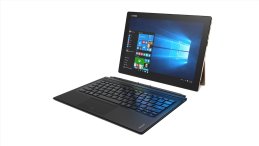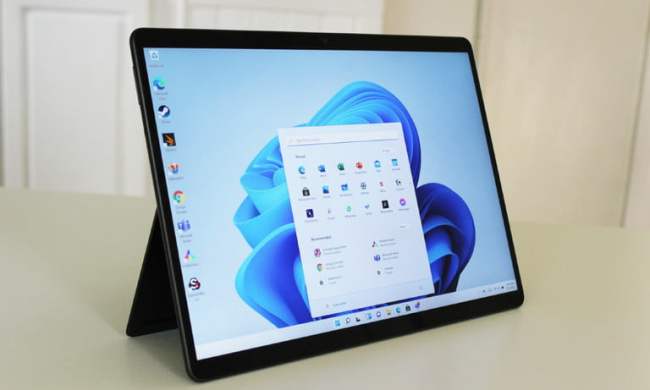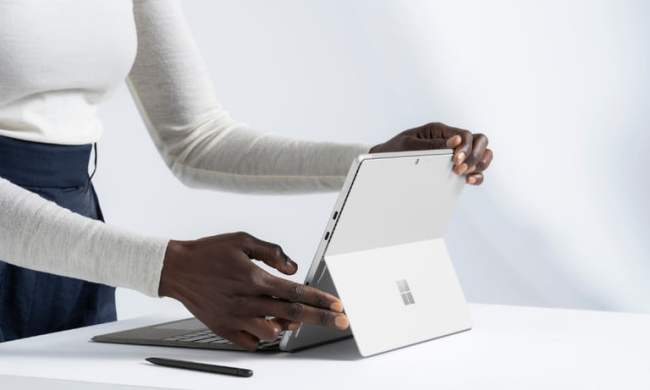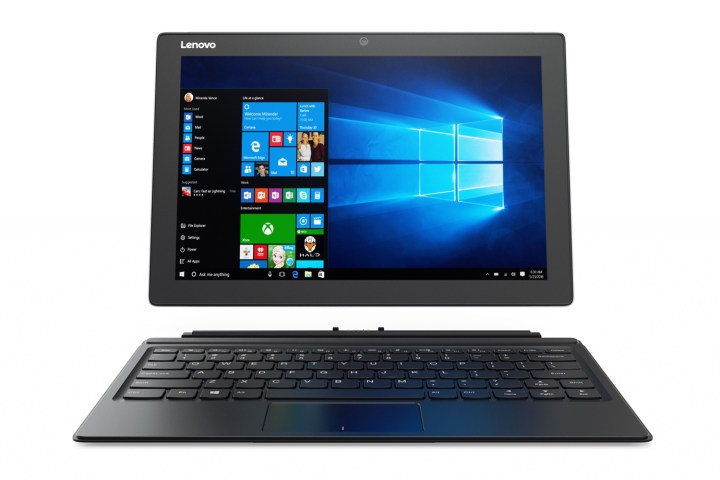
Read: Lenovo’s IFA 2016 lineup includes a laptop with virtual keys and a supercharged 2-in-1
|
Lenovo Miix 510 |
Microsoft Surface Pro 4  |
|
| Dimensions | 11.8 × 8.1 × 0.6 inches (with keyboard) | 11.50 × 7.93 × 0.33 inches |
| Weight | 1.9 pounds (without keyboard) | 1.69-1.73 pounds (without keyboard) |
| Keyboard | Backlit, full size, removable, included | Backlit, full size, removable, not included |
| Processor | 6th Gen Intel Core i7 | 6th Gen Intel Core m3, i5, or i7 |
| RAM | 4G to 8GB | 4GB to 16GB of RAM |
| Graphics | Intel HD 520 | Intel HD 515 to Intel Iris |
| Display | 12.2-inch IPS | 12.3-inch PixelSense |
| Resolution | FHD+ 1,920 × 1,200 | Ultra HD 2,736 × 1,824 |
| Storage | 128 to 512GB of PCie SDD | 128GB to 1TB SSD |
| Networking | 802.11ac Wi-Fi, Bluetooth, optional 4G LTE | 802.11ac Wi-Fi, Bluetooth 4.0 |
| Ports | USB Type-C, USB 3.0, microSD, composite audio jack | USB 3.0, microSD, mini DisplayPort, cover port, SurfaceConnect, headset jack |
| Webcam | Front 2-megapixel, back 5-megapixel | front 5-megapixel, back 8-megapixel |
| Operating System | Windows 10 Home | Windows 10 Pro |
| Battery | 7.5 to 8 hours | 9 hours |
| Price | $600+ | $900+ |
| Availability | Coming October 2016 | Available in U.S. |
| Review | Coming soon | Read it here |
Specifications
The Miix 510 is being heralded as a stronger alternative to the Surface 3, but as you can see, the best versions of the Surface Pro 4 tend to edge it out in terms of sheer power. The Pro 4 offers more upgrades with a higher ceiling for speed and storage, from 16GB of RAM to an Intel Iris GPU option.
However, we’re talking about the most expensive, fully upgraded version of the Surface Pro 4, an option many buyers probably aren’t interested in choosing. Overall, the specs are similar, except that the Pro 4 tends to offer more customization. In the middle ranges, there’s not much to distinguish the two hybrids except the display—so let’s talk about it!
Display

Both touchscreens are close to the same size and function in similar ways. However, the Miix 510 does something curious with resolution that we haven’t seen too much of yet—although it may become an increasingly common move in the laptop world. Its resolution isn’t quite ultra HD, but it does edge beyond full HD with what’s called “FHD+” that provides a 1,920 x 1,200 resolution.
The Pro 4, meanwhile, offers an unusual 2,736 x 1,824 resolution. It’s difficult to notice the difference on such a small display and, as we’ll note later, that display brings up the price of the Pro 4 quite a bit. Unless you are very dedicated to art and graphic design, the Miix FHD+ display looks like the smart choice here.
Portability
Portability is a total wash. Both laptops are around the same size, both laptops are 2-in-1s, and when you account for the keyboard, both have similar weights as well. Frankly, it’s even hard to tell which is which from a distance, if the color choices match up. You may also be interested to know that both laptops have kickstands for propping the laptops up on a table, and both kickstands have multiple position options. Really, it’s too competitive here to call either a winner.
Connectivity
Here the Miix 510 has an advantage by offering both Wi-Fi and, it appears, optional 4G LTE—this was largely confirmed at IFA. The Pro 4 cannot offer 4G services, which is pretty disappointing if you want a business computer that’s easy to travel with.
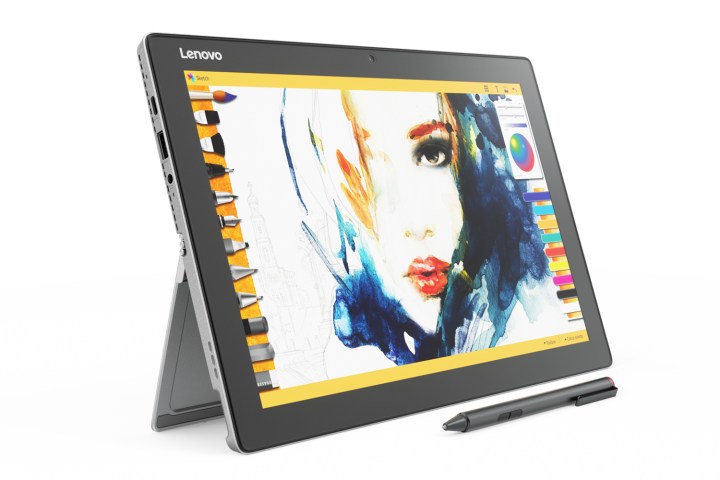
When it comes to ports, we see some interesting differences. The Miix 510 is a newer computer and offers the USB 3.0 Type-C connection, which can handle the latest USB standards and provide power delivery if necessary.
The Pro 4, on the other hand, is more media friendly than the Miix with mini DisplayPort, which is a great port for connecting to projectors, second screens, and a variety of current A/V devices. If you want a computer made for more traditional presentations, the Pro 4 is a better choice. If you need a device that is compatible with USB Type-C (an increasing necessity for the latest external devices and cutting edge A/V tech), go with the Miix.
Design
Again, with two computers that have so many of the same physical features, design isn’t really a deciding factor here. If you know what to expect from a 2-in-1 with a detachable keyboard, you won’t find any surprises with either model.
However, it’s important to mention the stylus and keyboard options. Both the Miix 510 and the Surface Pro 4 have very sensitive, customizable stylus options for their laptops. The Pro 4 stylus, however, is included in the price, while the Miix 510 stylus is sold separately.
The keyboard situation is the reverse. The keyboard is included with the Miix 510, but sold separately with the Pro 4. It’s difficult to know what this does to the cost, but it’s important to note that you probably need a keyboard, whereas the stylus may be more optional.
Availability and price

The Miix 510 is apparently going to hit the American market in October 2016. The starting price is expected to be $600.
The Pro 4, meanwhile, starts at $900 for its lowest-spec model. That extremely pixel dense screen tends increases the price point here, which makes this an easy call in the Miix 510’s favor.
Conclusion
The Surface Pro 4 comes out swinging hard, but it stumbles several times against the newer features and lower price of the Miix 510. If you want power, go with the Pro 4. If you want affordability and adaptability, try the Miix 510.
